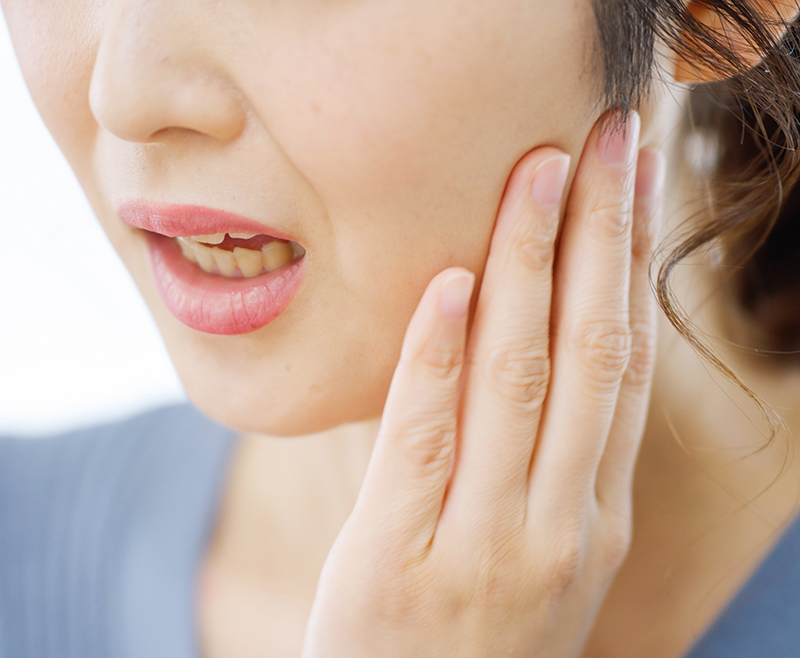What Is TMJ?
Temporomandibular Joint (TMJ) is the joint of the jaw. There are two TMJs, one on each side of the jaw, and they work in unison to open and close our mouths and allow us to chew and speak. A TMJ disorder (or TMD) is a chronic degenerative condition that can take years to develop and have serious consequences to your health and quality of life. When your jaw is misaligned, it can cause headaches, neck, and/or shoulder pain, clicking and/or popping sounds in the jaw, locked jaw, jaw pain, teeth grinding, and tinnitus (ringing in the ears).


Teeth Grinding
Bruxism, or teeth grinding, is common and often occurs during sleep. Occasional grinding may not cause harm, but frequent grinding can lead to tooth damage and jaw problems. It’s often linked to stress, sleep apnea, or issues like misaligned or missing teeth.
Since it usually happens during sleep, symptoms like headaches or a sore jaw may be your first clue. Our dentist can check for signs such as jaw tenderness or worn teeth. If untreated, bruxism can lead to fractures, tooth loss, or the need for extensive dental work. To protect your teeth, ask about a custom night guard at your next visit.
Clicking Or Locked Jaw
The temporomandibular joint (TMJ), located near your ears, connects your jaw to your skull and enables speaking, chewing, and yawning. Clicking, locking, or difficulty opening your mouth may indicate TMD, often caused by injury, inflammation, or jaw disorders.
Mild cases can improve with lifestyle changes like avoiding gum, reducing stress, eating soft foods, using anti-inflammatory meds, or wearing a night guard to prevent grinding. More severe cases may require professional care. Surgery is rare and only considered when other treatments fail.


Treatment
At your appointment, we’ll check for signs of wear and use tools like a full oral exam, panoramic x-rays, 3D scans, and high-definition photos to identify bite issues.
TMJ dysfunction is typically treated in two ways: with braces and orthodontic appliances to realign the jaw, or by first using an appliance to find the ideal bite position, followed by crowns to restore your teeth. Early treatment is key to preventing future complications.





